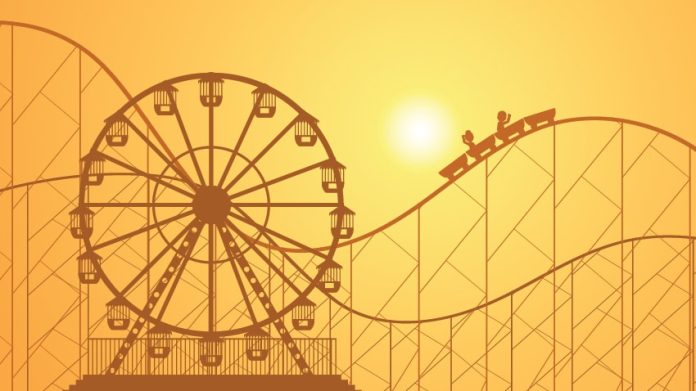Southern California, with its pleasant climate, is home to numerous amusement parks with attractions ranging from soft and fuzzy to thrilling and gut wrenching. However, even the low-key ones present some risk to your children. A new study published in the journal Clinical Pediatrics assessed that risk and offers steps parents can take to reduce those risks. It was conducted by researchers at the Center for Injury Research and policy, The Research Institute at Nationwide Children’s Hospital, Columbus, Ohio.
The study authors analyzed data from the National Electronic Injury Surveillance System. From 1990 to 2010, an estimated 92,885 children aged 17 or younger years sought treatment in US hospital emergency departments for injuries involving amusement rides, yielding an annual average of 4,423 injuries. The average annual injury rate was 6.24 injuries per 100,000 US children, and the average patient age was 8.73 years. Not surprisingly, most injuries occurred during the summer months; however, the report also noted that, although the majority of the injuries occurred at amusement parks, 11,000 (12%) of those injuries involved rides at local malls, restaurants, and arcades. Theme parks and other amusement parks with fixed-site rides accounted for 34% of the injuries; 29% occurred at carnivals, festivals and other temporary locations. About 25% of the cases did not have enough information to be accurately categorized. In addition, the investigators did not investigate all types of attractions. Some included rides were roller coasters, bumper cars, merry-go-rounds, log flumes, mini-trains, and coin operated rides. Some of the attractions not included were inflatable bouncers, ball pits, slides and go-carts.
The head and neck was the most commonly injured body region (28.0%), and the most common type of injury was a soft tissue injury (29.4%). Falling in, on, off, or against the ride was the most frequent cause of injury (31.7%). Only 1.5% of injuries resulted in hospitalization. Children injured on “mall rides” tended to be young, and were more likely to suffer head/neck or face injuries, concussions, or cuts. Compared to injuries from theme park or carnival rides, 73% of “mall ride” injuries occurred when a child fell in, on, off or against the ride. These injuries suggest that the rides may not have had restraints to secure the child and they may have been located over hard, unpadded surfaces; however, the study design did not provide that level of detail.
The study also found that 70% of injuries occurred from May to September, with an average of 20 injuries a day during these months. The injury rate declined from 8.79 per 100,000 in 1991 to 4.41 per 100,000 in 2003. More girls were injured than boys (56% vs. 45%). Body areas most frequently injured were the head and neck (28%); arms (24%); face (18%); legs (17%).
The Center of Injury Research and Policy at Nationwide Children’s Hospital offers these tips for keeping your child safe on amusement rides:
Always follow all posted height, age, weight and health restrictions.
Follow special seating order and/or loading instructions.
Always use safety equipment such as seat belts and safety bars.
Keep hands and feet inside the ride at all times.
Know your child. If you don’t think he/she will be able to follow the rules, keep him/her off the ride.
Trust your instincts. If you are worried about the safety of the ride, choose a different activity.
Avoid “mall rides” if they are on hard, unpadded surfaces or if they don’t have a child restraint such as a seat belt.








